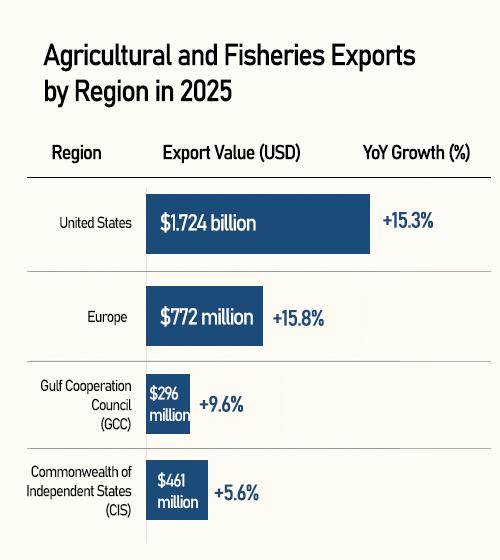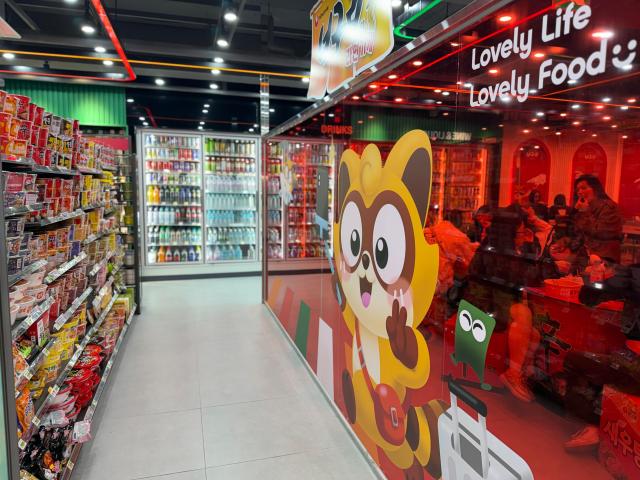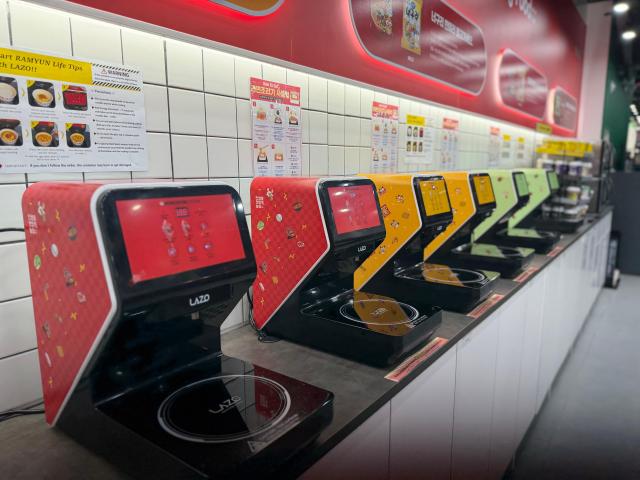
SEOUL, November 06 (AJP) - Ramyeon, Korea’s signature instant noodle, sits at the forefront of the K-food boom, even being marketed vigorously through K-Pop Demon Hunters as its varieties keep evolving with a widening global footprint. The range now spans hundreds of flavors and formats — from trendy mala and truffle to butter-soy and black-garlic blends — though the original spicy profile remains the undisputed classic.
Korea’s agri-food exports surpassed $10 billion (about 14 trillion won) this year, marking the earliest-ever point at which the milestone was reached, according to the Korea Agro-Fisheries & Food Trade Corporation (aT). The United States is the largest consumer at $1.72 billion, up 15.3 percent from a year earlier. Europe grew 15.8 percent to $772 million, followed by GCC countries at $296 million (up 9.6 percent) and the CIS at $461 million (up 5.6 percent).

Among export categories, ramyeon led the surge, bolstered by explosive demand in the U.S. and Europe. Ramyeon exports soared 24.7 percent to $1.116 billion. Seaweed exports increased 14.1 percent to $877 million, while kimchi exports rose 3.2 percent to $125 million. Grape exports jumped 45.2 percent to $35 million. The proliferation of Korean restaurants worldwide — propelled by the global boom in K-content — also boosted sauce exports by 9.2 percent to $315 million.

For many foreign visitors, tasting ramyeon has become a must-do Korean experience. Convenience stores have reported sharp spikes in sales following the resumption of visa-free group tours for Chinese visitors in late September. Between Sept. 29 and Oct. 12, sales to Chinese tourists at around 20 GS25 stores in Myeong-dong and Seongsu surged 111 percent compared to the previous two weeks. CU stores in Myeong-dong and Hongdae saw an 89 percent rise, while 7-Eleven branches in Myeong-dong reported a 50 percent increase.
Buldak-bokkeum-myeon and Shin Ramyun were the top sellers, often stocked prominently at store entrances. The buying frenzy has been amplified by Xiaohongshu, China’s Instagram-like platform, where viral videos on must-buy Korean convenience-store items and travel shopping lists have shaped consumer behavior. Shopping habits once guided by tour agencies are increasingly molded by online micro-trends.

Korean ramyeon has also transformed into an experience-based attraction. The rise of 'Ramyun Library' stores — where customers can choose noodles and cook them on-site — has made the ramyeon aisle a tourism hotspot.
CU opened its first 'Ramyun Library' in Hongdae in 2023 and has since expanded the model to 55 stores nationwide. According to BGF Retail, ramyeon sales at these locations rose 153.8 percent year-on-year between January and September.

Courtney from Canada, visiting Seoul with friends, said she was surprised by the novelty. "It’s like a whole experience here. Back home we don’t have machines that let you cook noodles right in the store," she said.
Sophie from Austria said social media influenced her trip. "I first learned about Korean ramyeon on TikTok, and it’s what brought me to Seoul. Korean noodles are thicker and saucier than others. Buldak Ramyeon is my favorite," she said.
A CU part-timer in his 20s said spicy varieties dominate tourist purchases.
"Buldak and Buldak Carbonara are the most popular. Foreign visitors really love Korean-style spicy noodles," he said.
Copyright ⓒ Aju Press All rights reserved.




